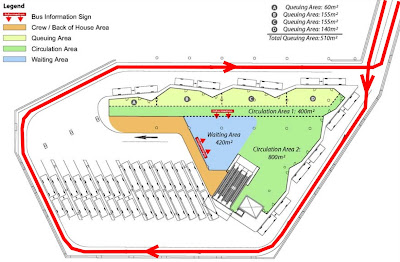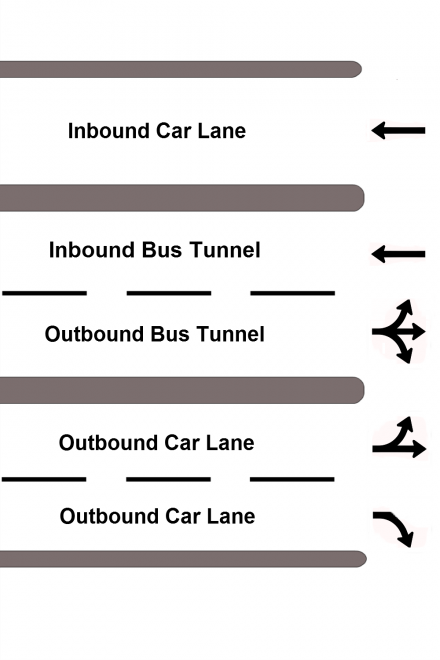For those of you new to UBC and UBC Insiders, Dr. Darren Peets has already written the authoritative piece deconstructing the poor planning behind the underground bus loop. Darren would undoubtedly be proud to think that he may have literally analyzed the project to its death.
Before the big news broke yesterday, UBC Insiders had been looking further into the technical design of the underground bus loop. In the interest being topical, and also of not having all this research going to waste, here’s an interesting data study that was conducted on the bus loop’s capacity showing that the whole thing would have been absolute chaos every single day.
Carson Lam, a science student at UBC, developed an absolutely awesome website called TransitDB, which takes all of Translink’s data and presents it in new and much more useful ways of looking at it. But for data nerds, the biggest asset of having a database is that you can mine it for information. Data is a science student’s best friend.
If you recall, the proposed bus loop had 3 arrival bays and 4 departure bays. Where the buses cross over, there was to be a stop light which was to run on a cycle of approximately two minutes. In a practical sense what this means is that in any two-minute span there is a maximum of 3 arrivals and 4 departures.

Carson kindly took all of the bus routes that stop in the diesel bus loop, gathered all of the scheduled arrival and departure data, and broke it down into two minute increments.
The data confirms what many have predicted all along: massive failure during peak times, especially with arrivals in the morning rush hour. Looking at isolated two-minute periods, you’ll find over 65 examples every day where there are 4 or more buses coming in for only 3 arrival bays. The worst is from 9:34-9:35 am, when there are 7 buses scheduled to arrive.
But take the data in context and it gets even more disturbing, because those over-capacity periods stack up on top of each other. Here is a small slice of time during the morning rush. Keep in mind these are the buses arriving in the 15 minutes before classes start – when people most want to get to school, get off the bus, and rush off to class.
| # of Arrivals | Time (am) |
|---|---|
| 3 | 8:44 |
| 6 | 8:46 |
| 5 | 8:48 |
| 3 | 8:50 |
| 4 | 8:52 |
| 2 | 8:54 |
| 5 | 8:56 |
| 1 | 8:58 |
| 6 | 9:00 |
By 9:00 am, there would buses piled up in the tunnel eight-deep. If you look at the data past 9:00 am, it actually gets even worse. The whole thing would have turned into one giant clusterfuck every single day from about 8:30 am until after 11:00 am with buses arriving at UBC only to be queued up in the tunnel for many minutes.
Nobody from Translink or Campus and Community Planning has ever even attempted to explain the data, or how the bus loop would accommodate so much traffic, except to invoke the mystical technical studies that have been referenced ad nauseum but that, as far as I know, have never been made available to the public.
The departures data isn’t quite as bad, thanks to the presence of an extra departure bay. But there are still a significant number of times where there are more departures scheduled than bus bays. Have someone with a wheelchair getting on and you’ve pretty much thrown the whole thing into a tizzy. Remember that everything basically had to run smoothly down to the minute for the terminal to function properly.
If for whatever reason UBC finds some way to continue pushing forward with the underground bus loop, they should have to account for this data and explain exactly how the design can possibly accommodate so many buses coming in such a short span of time.
A huge thanks to Carson Lam for his work on this!
Finally, the other amusing thing that surfaced is how University Boulevard would have been arranged at the intersection with Wesbrook Mall:

If you noted that it requires the buses and cars to cross over at the intersection, you are also probably perplexed at this design. One does not have to be a bona fide transportation planner to realize that designing left-hand turns from right-hand lanes and right-hand turns from left-hand lanes is not, and should not be, common practice. The light cycle at this intersection (which currently clocks in at 1m 40s) would have to be extended to accommodate two cycles of green in the same direction (one for cars and one for buses).
The U-Blvd project only had provisions to re-jig that one quarter of the intersection, even though University Boulevard on the other side of Wesbrook, which sits within the UEL, would have needed to be completely re-designed as well to work with these changes. It is not clear whether a design for the rest of the intersection was ever proposed, nor whether anyone was willing to cough up the money for it. The intersection this would have created would have just been delightfully silly.






A charming example of how open data can make for great public, accountable discussion. Thanks Carson/Neal!
[...] This post was mentioned on Twitter by The Ubyssey and ubcinsiders, Blake Frederick. Blake Frederick said: RT ubcinsiders New Post: TransitDB: Underground Bus Loop would have been completely overloaded http://bit.ly/2mTsMN ubcinsiders.ca #ubc [...]
The light cycle in the tunnel actually had two greens, one lasting 7-9 seconds and allowing two more buses through. Those buses would wait at the red at Wesbrook, then the main green cycle would send four buses up to catch the green just as the first two buses were getting out of the way. So up to 6 buses could go through in a 110-120 second cycle. Inbound would be green most of the time. The limiting factors were things like wheelchairs, line-ups of buses blocking some of the bays, and the general ability of Vancouver buses to be scheduled to the second. Bikes would probably have been barred from the terminal in peak periods. Needless to say, any crash at the underground light would be somewhat problematic. Any minor problem could still have taken several hours to recover from, and could have screwed up the schedules for most of the day.
TransLink’s consultants considered the terminal to be at capacity when the line-up of buses waiting to get into it did not stretch back through the Wesbrook intersection more than 5% of the time in the am peak period. I believe that was 17 or 19 standard-length buses?
And I’m quite confident my analysis had nothing to do with this.